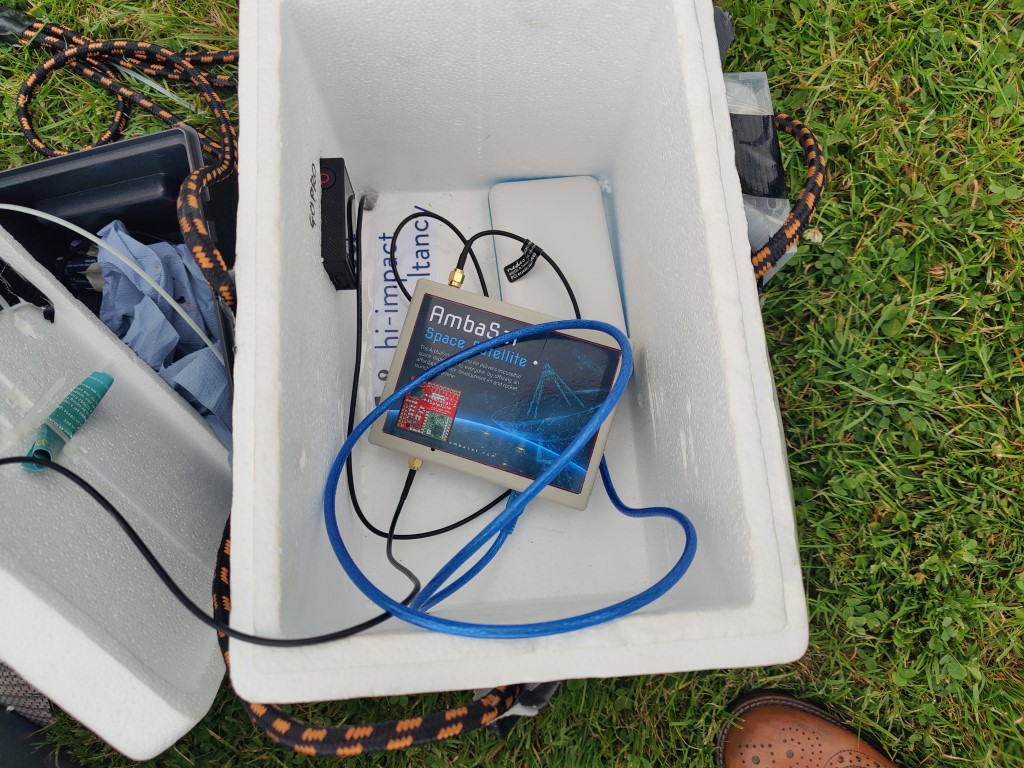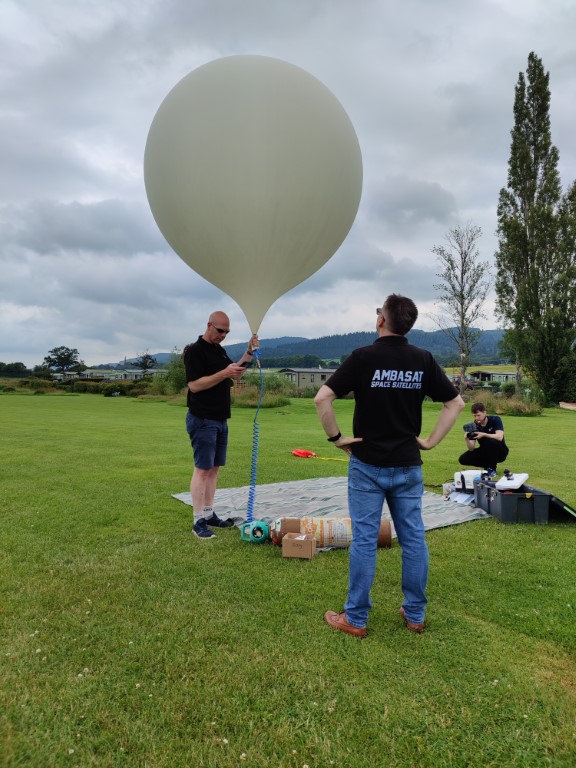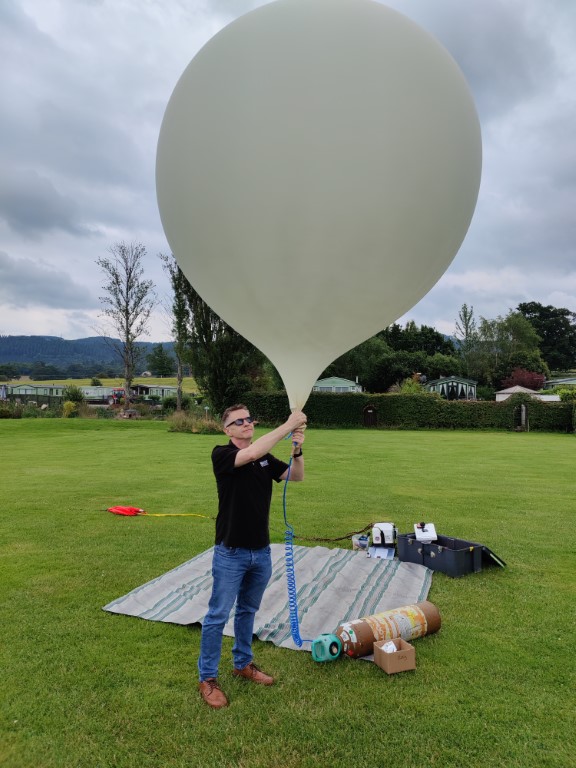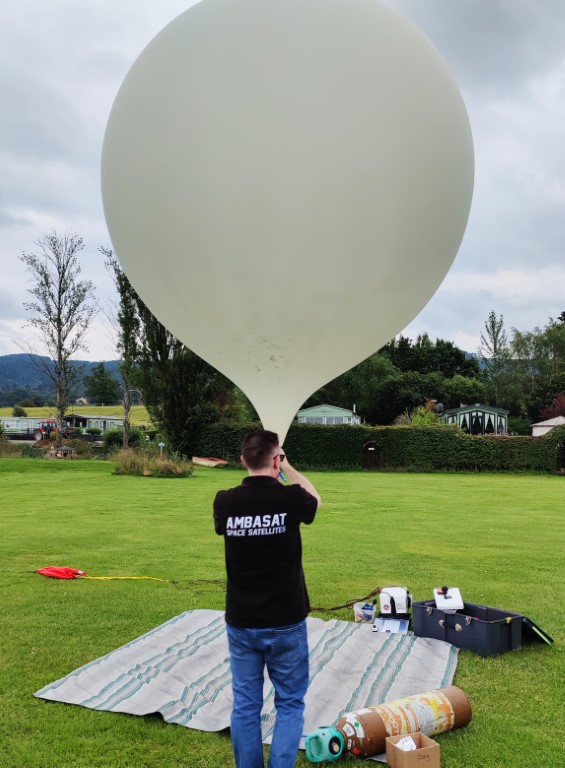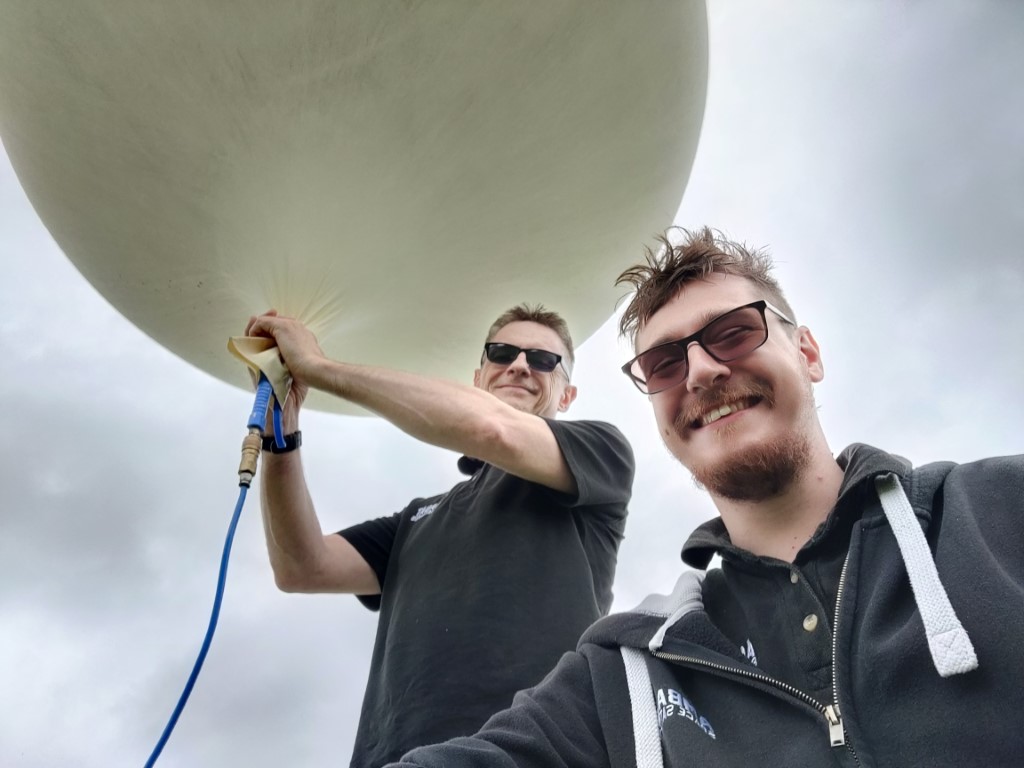An exciting collaboration with the teams at Hi-Impact and Mosslands School near Liverpool achieve AmbaSat-1’s first UK High Altitude Balloon (HAB) launch, reaching an altitude of almost 35km!
The launch took place at Welshpool, Wales and on the day, the weather was calm with a light southerly breeze. We spent the morning with the team from Hi-Impact, first taking part in the pre-launch ritual of consuming the ‘Belly Buster’ >>> The Manwich <<< (2 bacon, sausage, eggs, 2 hashbrowns & mushrooms, all in a burger bun… enough said, but it did the trick!
At 11 am, we received final clearance from the CAA to go ahead with the launch and at 11.01 am we were up in the sky.
AmbaSat-1 carried a number of onboard sensors – the Bosch Sensortec BME680 gas, pressure, humidity & temperature sensor, together with our new high performance Teseo-LIV3F GPS sensor. Mission data was transmitted using the onboard LoRaWAN transceiver and over ‘The Things Network’ (TTN) to the AmbaSat Dashboard.
As launches sometimes go, not everything went according to plan and we experienced some valuable battery lessons for our next launch in September.
The balloon eventually landed late on the Friday afternoon, about 50km from Welshpool. All in all, an excellent result and it was really great to get some AmbaSat flight time under our belts.
Thank you to the team at Hi-Impact for making it all happen and also to The Mosslands School for a truly visionary approach to STEM
Hi-Impact
https://hi-impact.co.uk/
The Mosslands School
https://www.mosslands.co.uk/
Are you interested in running the AmbaSat STEM Course?
The AmbaSat “Build Your Own Space Satellite” Course is a 10 week course which engages students in a wide range of both theory and practical activities related to STEM. These activities include coding, engineering, project management, data analysis, electronics, collaboration, problem solving, production, design, testing and much more. The AmbaSat course nurtures creativity and encourage students to think outside the box.
AmbaSat Course Syllabus
• Lesson 1 : Introduction to AmbaSat. Unpacking your kit and taking a look at what’s inside. The history of satellites. The first satellite in space. Progress through the years.
• Lesson 2 : Assembly Basics. The PCB, Resistors, Capacitors, MCU, radio transceiver. How sensor data is received. Power supply.
• Lesson 3: The Sensors range. What each one does. Student choice of sensor. Written reasons and aims
• Lesson 4: Tools needed for the assembly. Safety and how to use. Practical with some basic soldering tuition and skills assessment.
• Lesson 5: Assembly. Adding the programmer pins & sensor daughterboard
• Lesson 6: Introduction to Coding. Visual Studio Code. Connecting the satellite to the computer
• Lesson 7: Continued coding. Getting the flashing led program working. Coding the sensor. Looking at The Things Network. Testing
• Lesson 8: The AmbaSat Dashboard. Your first signals from your satellite. Viewing and analysing the data.
• Lesson 9: AmbaSat Assembly Review, testing & any rework. Looking at the data which will be sent back to Earth from the AmbaSat-1 satellite, such as CO2 (global warming), infra-red and UV (solar activity)
• Lesson 10: Rocket Science. Rocket theory: stages, centre of gravity, centre of pressure. Rocket Practical: Pump rocket launches with AmbaSat onboard. Analysing the results of the launches (altitude, velocity).
• End of course competition: Best satellite. Best sensor reasons. Which satellite(s) will win a rocket ride.
If you’re interested to learn more or thinking about running your own course, please get in touch. We’d love to help! Email jackie.northrup@ambasat.com
